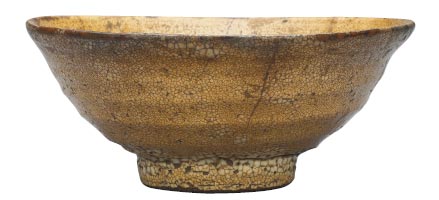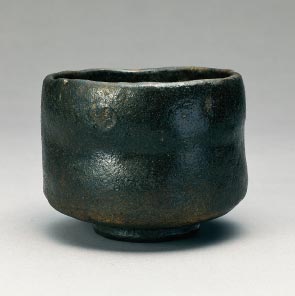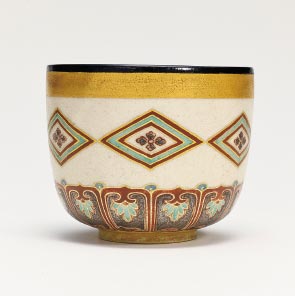
Due to popular demand,
the special exhibition commemorating the 100th birthday of our founder,
MIHO GRANDAMA, has been extended to the summer and autumn.
In summer, visitors can enjoy viewing paintings such as Willow Bridge and Water Wheel (attributed to Hasegawa Tōhaku, 1539−1610) and Tagasode (Whose Sleeves? on the cover of this issue) that resonate with the special exhibition Dynamic Decoration in Asia. The autumn highlights a set of celebrated tea utensils, which will be publically exhibited for the first time. Adorning the finale of this commemorative exhibition in celebration of our founder’s birth will be treasures including the calligraphy of the Zen master Daitō Kokushi (Shūhō Myōchō, 1282−1337), the famous Shōan Ido tea bowl seized by the warlord Hideyoshi after the death of the tea master Sen Rikyū (1522−1591) and later inherited by Rikyū’s adopted son Shōan (1546−1614), the black Raku tea bowl Shaka (Sakyamuni Buddha) by Chōjirō (n.d.), the sutra cylinder-shaped flower vase owned by Rikyū, the tea scoop Shūgakuin attributed to the tea master Sen Sōtan (1576−1658), and the gold and silver floral lozenge-shaped Ninsei tea bowl.
*A portion of the art works will be rotated during the exhibition.

Shōan Ido Tea Bowl
Owned by Sen Rikyū (1522−1591)
Korea, Joseon dynasty
Owned by Sen Rikyū (1522−1591)
Korea, Joseon dynasty


Black Raku Tea Bowl, “Shaka”
(Sakyamuni Buddha)
Named by Kakukakusai (1678−1730)
By Raku Chōjirō (n.d.)
Japan, Momoyama period
Named by Kakukakusai (1678−1730)
By Raku Chōjirō (n.d.)
Japan, Momoyama period
Tea Bowl with Linked Floral Lozenges in
Overglazed Enamels and Gold and Silver Paint
By Nonomura Ninsei (act. c. 1646−1677)
Japan, Edo period
By Nonomura Ninsei (act. c. 1646−1677)
Japan, Edo period